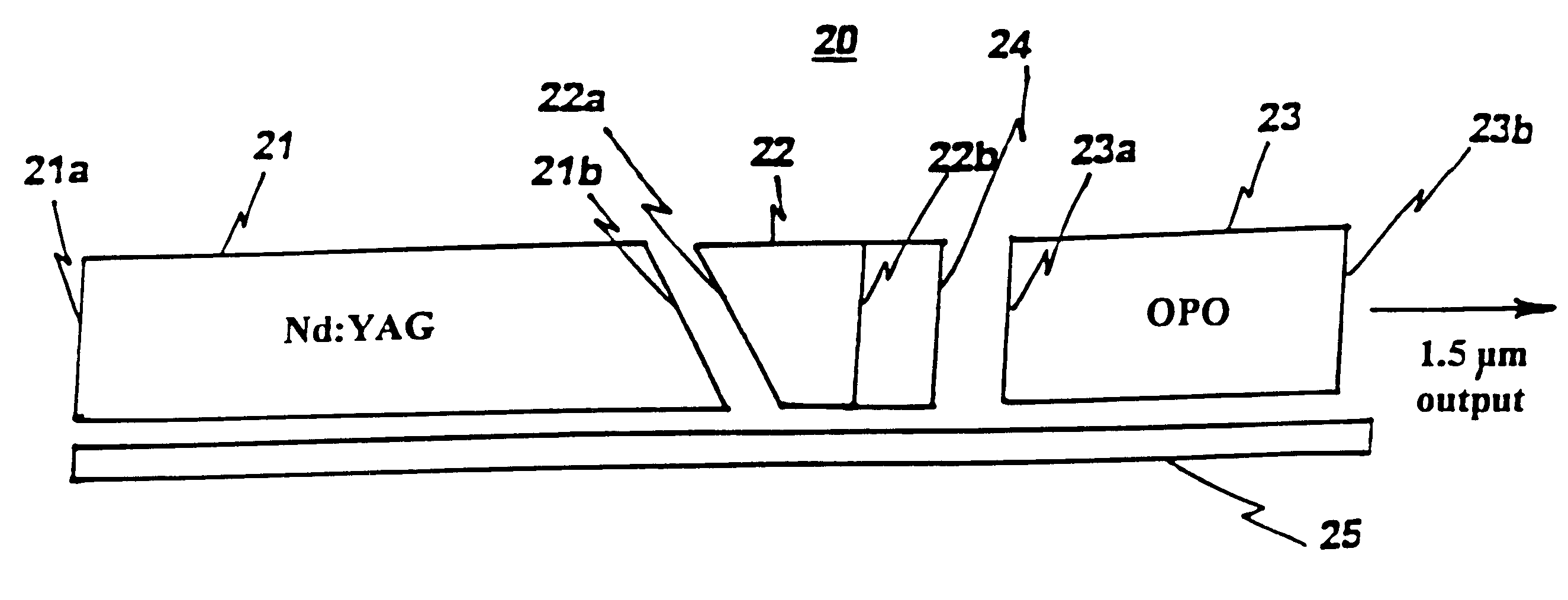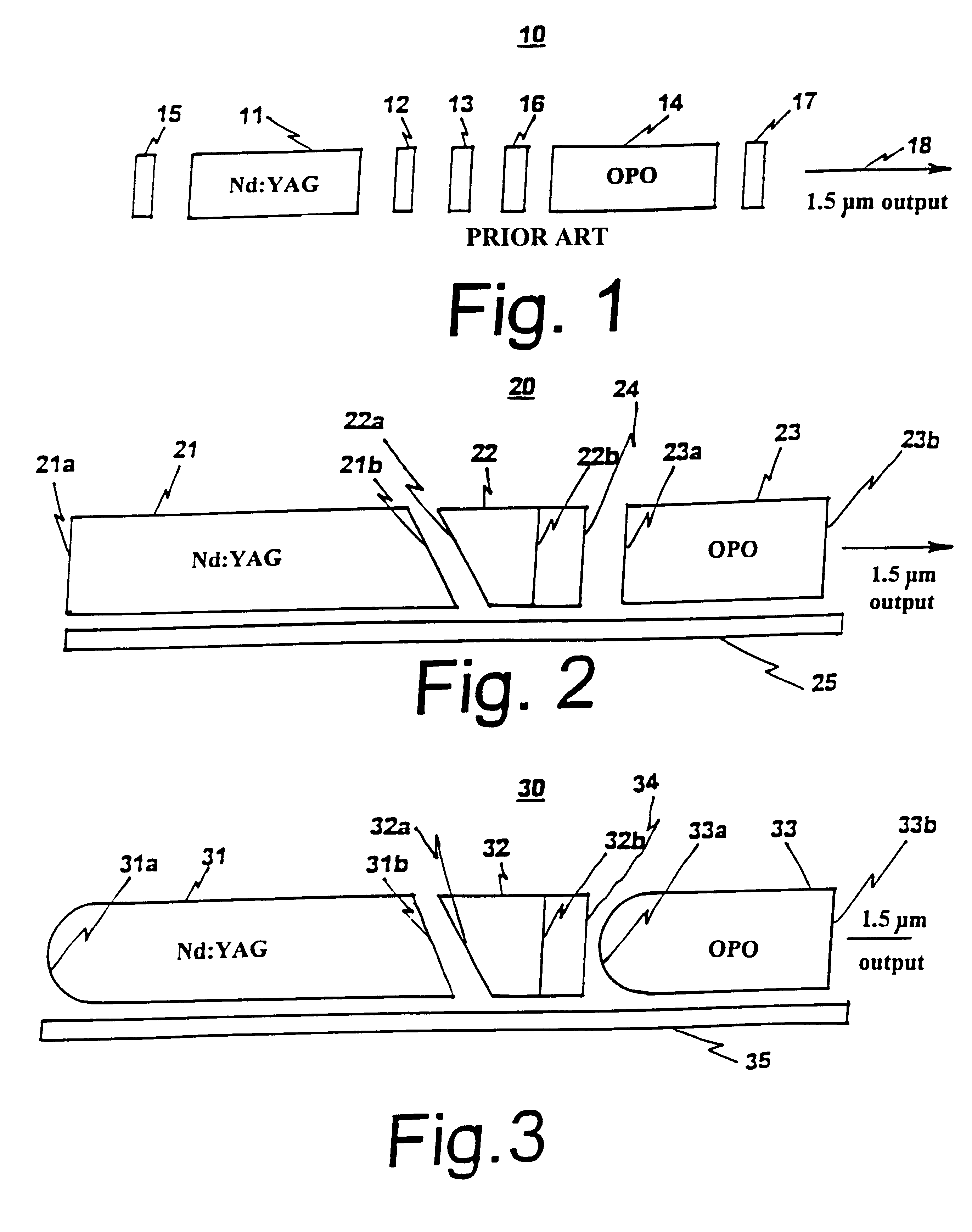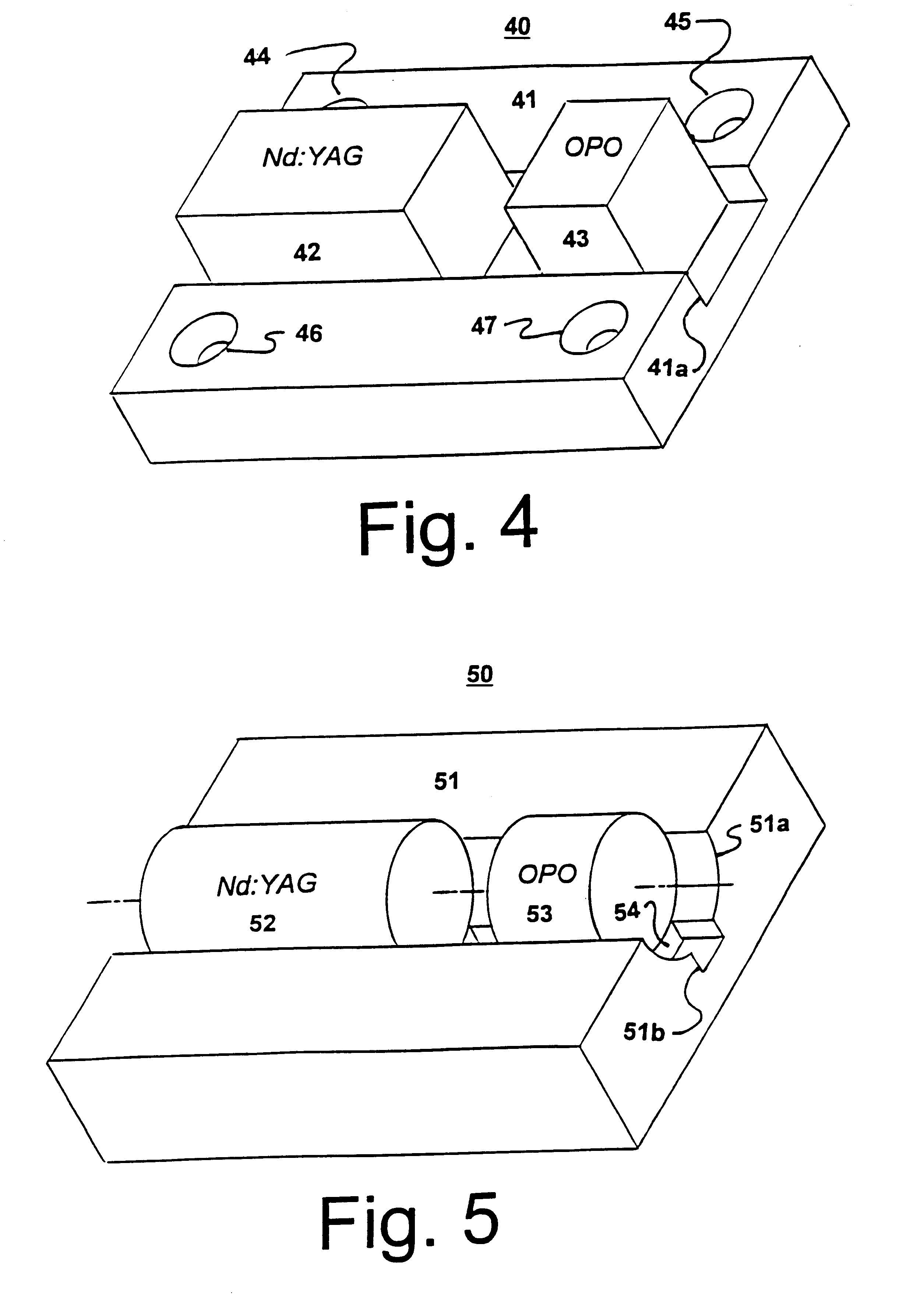Pseudo-monolithic laser with an intracavity optical parametric oscillator
a pseudo-monolithic laser and optical parametric oscillator technology, applied in the direction of laser details, active medium materials, optical resonator shape and construction, etc., can solve the problems of increasing the size of laser devices and exacerbate the many fabrication problems of these devices
- Summary
- Abstract
- Description
- Claims
- Application Information
AI Technical Summary
Problems solved by technology
Method used
Image
Examples
Embodiment Construction
FIG. 1 shows a laser subassembly, which lacks only an optical pump. Although any number of designs exist for an optically pumped, passively Q-switched, 1.5 micron wavelength, laser; the typical model 10 shown using an optical parametric oscillator (OPO) for frequency shifting has been chosen for improvement. The subassembly contains many discrete optical elements i.e. a laser rod of gain material 11, a polarizing element 12, a passive Q-switch 13, a body or rod of nonlinear dielectric material 14 for the OPO and three mirrors or reflecting filters 15, 16 and 17. All of these elements normally share a straight common optical axis 18. Moving from left to right along this axis, the first mirror 15 is called an HR mirror, because it is highly reflective at the pump-laser wavelength, in this case 1.06 microns. The next element, the gain material 11, may be a rod shaped body of a specific solid state laser crystal, such as the material Neodymium:Yttrium-Aluminum-Garnet (Nd:YAG). These cry...
PUM
 Login to View More
Login to View More Abstract
Description
Claims
Application Information
 Login to View More
Login to View More - R&D
- Intellectual Property
- Life Sciences
- Materials
- Tech Scout
- Unparalleled Data Quality
- Higher Quality Content
- 60% Fewer Hallucinations
Browse by: Latest US Patents, China's latest patents, Technical Efficacy Thesaurus, Application Domain, Technology Topic, Popular Technical Reports.
© 2025 PatSnap. All rights reserved.Legal|Privacy policy|Modern Slavery Act Transparency Statement|Sitemap|About US| Contact US: help@patsnap.com



